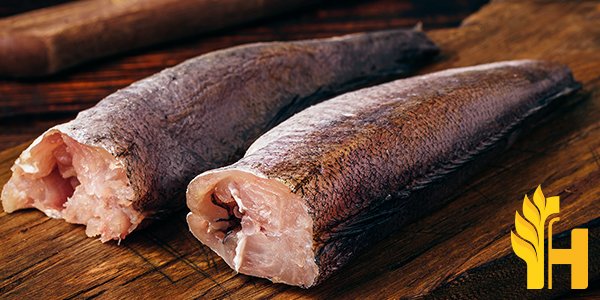Hake price

Where to buy and sell Hake, lowest (cheapest) and highest price.
check offers buy sell HakeToday price for HakeHake wholesale prices 2022
The Current commodity price of Hake per kg, pound in the world in the global markets
hake n4 up to 2.5 kg. frozen
Price range: 4.8 - 7 EUR / 1 kg | Market: Mercamadrid | Date: 2025-12-04
hake n5 of up2.5 kg. frozen
Price range: 7.4 - 7.4 EUR / 1 kg | Market: Mercamadrid | Date: 2025-12-04
hake n4 up to 2.5 kg. frozen
Price range: 4.8 - 7 EUR / 1 kg | Market: Mercamadrid | Date: 2025-12-01
hake n5 of up2.5 kg. frozen
Price range: 7.4 - 7.4 EUR / 1 kg | Market: Mercamadrid | Date: 2025-12-01
Hake
Hake is a delicious, white-fleshed fish that can be prepared in a variety of ways. It's a great choice for a healthy, protein-rich meal. Hake is low in mercury and high in omega-3 fatty acids, making it a nutritious and environmentally-friendly choice. When buying hake, look for fresh or frozen fillets that are firm to the touch and free of any dark spots or bruising. Avoid fish that has a strong fishy odor. Hake can be cooked using a variety of methods, including baking, grilling, frying, and steaming. It's also a versatile ingredient in soups and stews. For a quick and easy meal, try pan-frying hake fillets with some butter, garlic, and lemon juice. Hake is a whitefish that is related to cod. It is found in the northwest Atlantic, northeast Pacific, and Southern oceans. Hake are bottom-dwelling fish and can grow up to four feet long. Hake is an important food fish and is commonly caught by commercial fisheries. They are typically sold fresh, frozen, or canned. Hake is a versatile fish and can be cooked in many different ways. Hake is a good source of protein and omega-3 fatty acids. It is also low in mercury. Hake is considered a sustainable seafood choice. Hake is a very popular game fish, prized for its fighting spirit and delicious taste. They can be found in both salt and fresh water, and are most commonly caught using hook and line. Hake can reach up to 25 pounds in weight, but the average size is much smaller. They are schooling fish, and typically travel in large groups. Hake is a versatile fish and can be cooked in many different ways. They are often grilled, baked, or fried. Hake is also popularly used in fish and chips. No matter how you choose to cook them, hake is sure to please. So next time you're looking for a delicious and hearty fish to add to your meal, be sure to give hake a try. Hake is a versatile fish that can be cooked in many different ways. They are often grilled, baked, or fried. Hake is also popularly used in fish and chips. No matter how you choose to cook them, hake is a delicious and healthy option for your next meal.Global hake production
Hake is one of the most important commercial fish species in the world. It is widely consumed by humans and is an important source of income for many fishing communities. Hake is also an important prey species for a variety of predators, including other fish, seabirds, and marine mammals. Hake is typically caught using trawlers, and the fish are then brought to shore where they are processed. The processing of hake involves cleaning and filleting the fish, and then packaging it for sale. Hake is sold fresh, frozen, or canned, and it is also used in a number of prepared dishes. Chile is the world's leading producer of hake, and fish is an important part of the country's economy. Hake is also caught in other parts of the world, including the United States, Canada, and Europe. However, the majority of hake that is consumed globally comes from Chile. The majority of hake caught globally is used for human consumption, with Japan, Chile, and Spain being the biggest consumers. Hake is a versatile fish that can be cooked in many different ways. It is often fried, baked, or grilled. Despite its importance, global hake stocks are in decline. Overfishing is the primary cause of this decline, as hake are harvested at a rate that exceeds their ability to replenish their numbers. This has led to drastic reductions in hake populations around the world, with some stocks now at risk of collapse.Download our new
Husfarm App
Stay up to date with the current prieces of agricultural products all over the world.
Do you want to sell agricultural products?
Are you an Agricultural processor looking for high-quality products to buy?
Post an ad for FREE!
